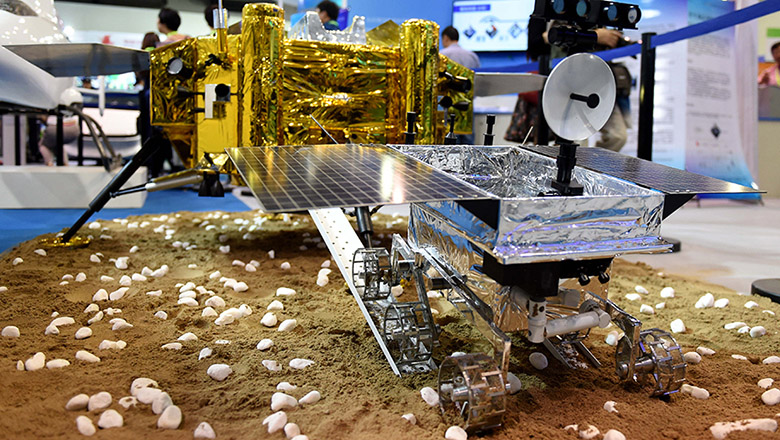Precision strike role seen for superfast hypersonic glider
Updated: 2016-05-17 08:04
By Zhao Lei(China Daily)
|
||||||||
China's hypersonic glider will probably be used to infiltrate enemies' missile defenses and conduct precision strikes against inland targets, according to a defense industry magazine.
The glider is widely known by foreign observers as the Wu-14 or DF-ZF.
In the latest issue of Modern Ships, a cover story discusses the design, technological level, operational restrictions and development difficulties of the next-generation strike platform. The story is titled "China's Wu-14 will not be a carrier killer, it has another important mission".
Zhang Chuanhua, the author, from the Research Institute of Modern National Defense and Security in Beijing, wrote, "Through meticulous analysis, we concluded that the Wu-14 is not suitable for anti-carrier operations, and its real function will be much more important than hitting an aircraft carrier."
According to Western media reports, the Wu-14 is probably China's most advanced weapon that is still being developed. It will reportedly be able to fly at nearly 12,360 km/h and be able to avoid detection and missile defense interceptors.
The Washington Free Beacon, a website in the United States, reported last month that China launched a ballistic missile on April 22 from the Wuzhai missile test center in Shanxi province to test a Wu-14.
It was the revolutionary glider's seventh successful test flight, the report said, adding that the process was tracked by US satellites.
Earlier reports by Chinese media quoted military analysts as saying that the glider could be used to sink aircraft carriers. However, the Modern Ships article says that engineers will have to overcome a number of technological problems to enable the Wu-14 to hit ships.
For instance, its hypersonic speed will create a plasma field around the vehicle that will disrupt its radar detection of an aircraft carrier, and there is no solution to this problem so far, according to Zhang.
"Therefore, its best and most reasonable function will be to act as a strategic nuclear deterrent vehicle, as it is able to perform extensive maneuvers to bypass missile defense systems," Zhang said.
Shao Yongling, a senior colonel and a professor of military strategy at the PLA Rocket Force Command College, told China Daily the Wu-14 cannot have been designed to hit an aircraft carrier. It can travel so fast that there is almost no time for it to adjust its course during flight, Shao said.
"On the other hand, its ultrafast speed and superlong range make it a perfect vehicle to strike distant ground targets. ... It can replace intercontinental ballistic missiles."
Gao Zhuo, a military observer in Shanghai, said the glider's operational mechanism is different from that of an anti-carrier ballistic missile. The Wu-14 is still undergoing tests and is subject to technical changes, he added.
- Russia to build first cruise liner in 60 years
- LinkedIn, Airbnb match refugees with jobs, disaster survivors with rooms
- Duterte 'willing to improve ties' with Beijing
- Canadian PM to introduce transgender rights bill
- Hillary Clinton says her husband not to serve in her cabinet
- New York cake show designs fool your eyes

 China Daily, celebrating 35 years
China Daily, celebrating 35 years
 Six things you may not know about Grain Buds
Six things you may not know about Grain Buds
 China Beijing International High-tech Expo
China Beijing International High-tech Expo
 Highlights at Google I/O developers conference
Highlights at Google I/O developers conference
 Nation celebrates International Museum Day
Nation celebrates International Museum Day
 Body brushwork creates vivid animals
Body brushwork creates vivid animals
 Can you still recognize these cities?
Can you still recognize these cities?
 A private museum owner's devotion to cultural protection
A private museum owner's devotion to cultural protection
Most Viewed
Editor's Picks

|

|

|

|

|

|
Today's Top News
Liang avoids jail in shooting death
China's finance minister addresses ratings downgrade
Duke alumni visit Chinese Embassy
Marriott unlikely to top Anbang offer for Starwood: Observers
Chinese biopharma debuts on Nasdaq
What ends Jeb Bush's White House hopes
Investigation for Nicolas's campaign
Will US-ASEAN meeting be good for region?
US Weekly

|

|





